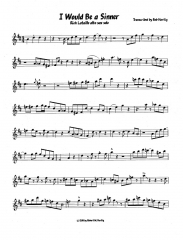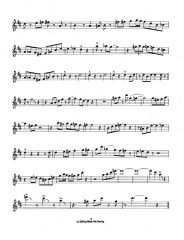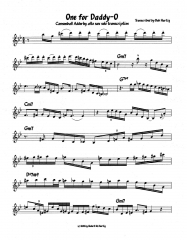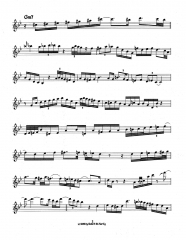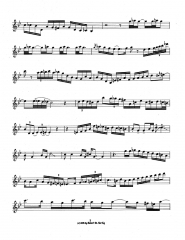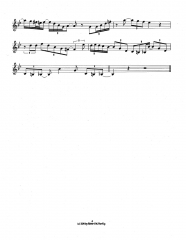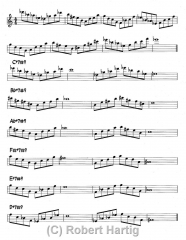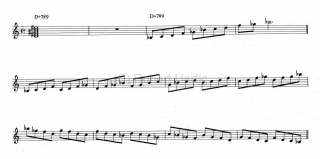A couple years ago, while listening to WBLV (a wonderful West Michigan jazz radio station), I heard a tune by the band Roomful of Blues that put a smile on my face and set my insides to dancing. The title was “I Would Be a Sinner” from the CD Raisin’ a Ruckus, published in 2008 by Alligator Records. Predictably, I suppose, considering the name of the band, the tune was an F blues, and the alto sax solo by Rich Lataille was just perfect. I don’t know how else to describe it, and I’m not going to try too hard other than to say that Rich’s tone is beautiful, his technique is surgically clean, and his approach is passionate and smack on the money.
Here are all three choruses, transcribed for the alto sax. (Click on the images to enlarge them.) It probably needs no saying, but I’ll say it anyway: You’d do
well to pick up the CD, or at least download the tune on MP3. I’ve notated some of the important slurs and articulations, but I’ve by no means tried to capture all of them, and you’ll want to hear them. You’ll also want to check out the interplay between the alto and the bari sax in the second chorus, with the addition of other instruments in the third chorus. The counterpoint hearkens back to Dixieland bands in spirit, though the style is obviously different.And that’s all I need say, other than that this is a great tune, and I hope you’ll enjoy playing it and listening to it as much as I do!
